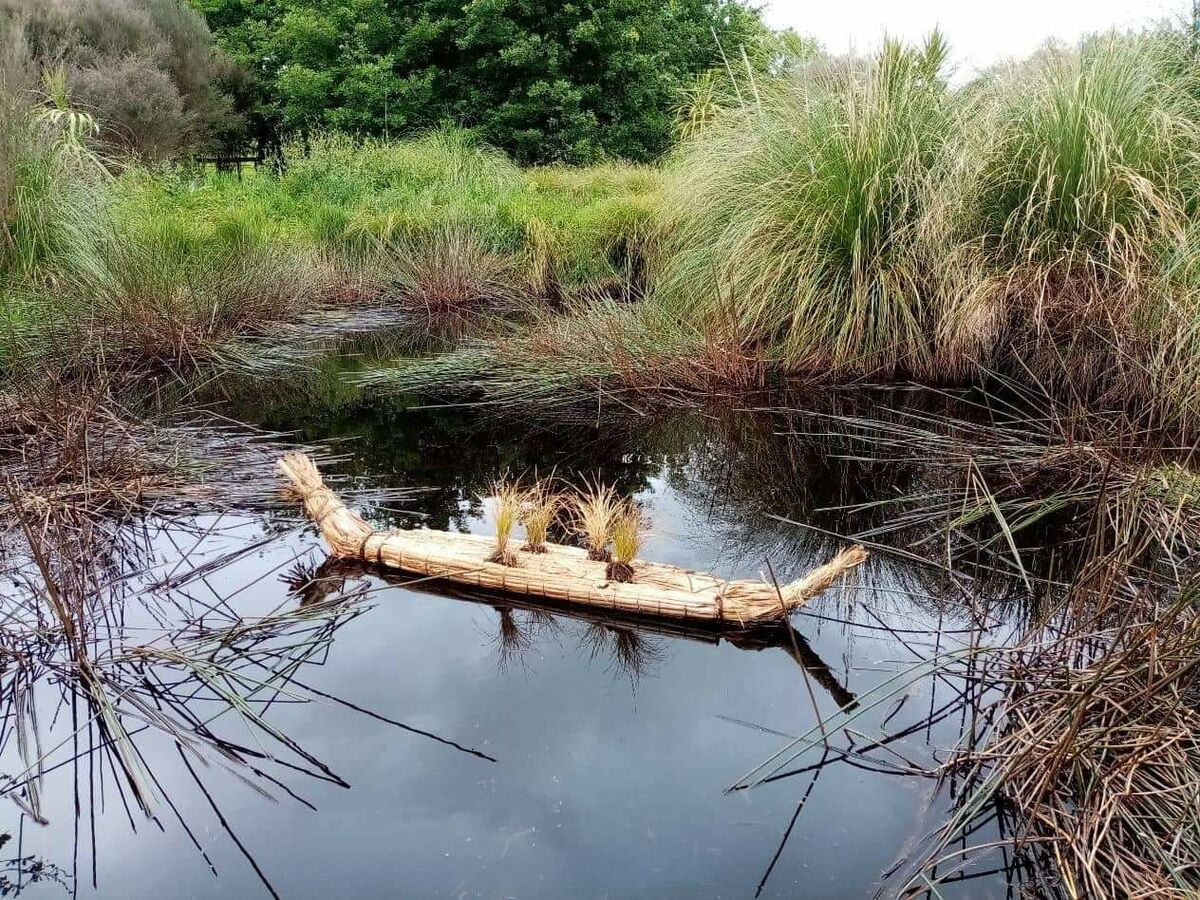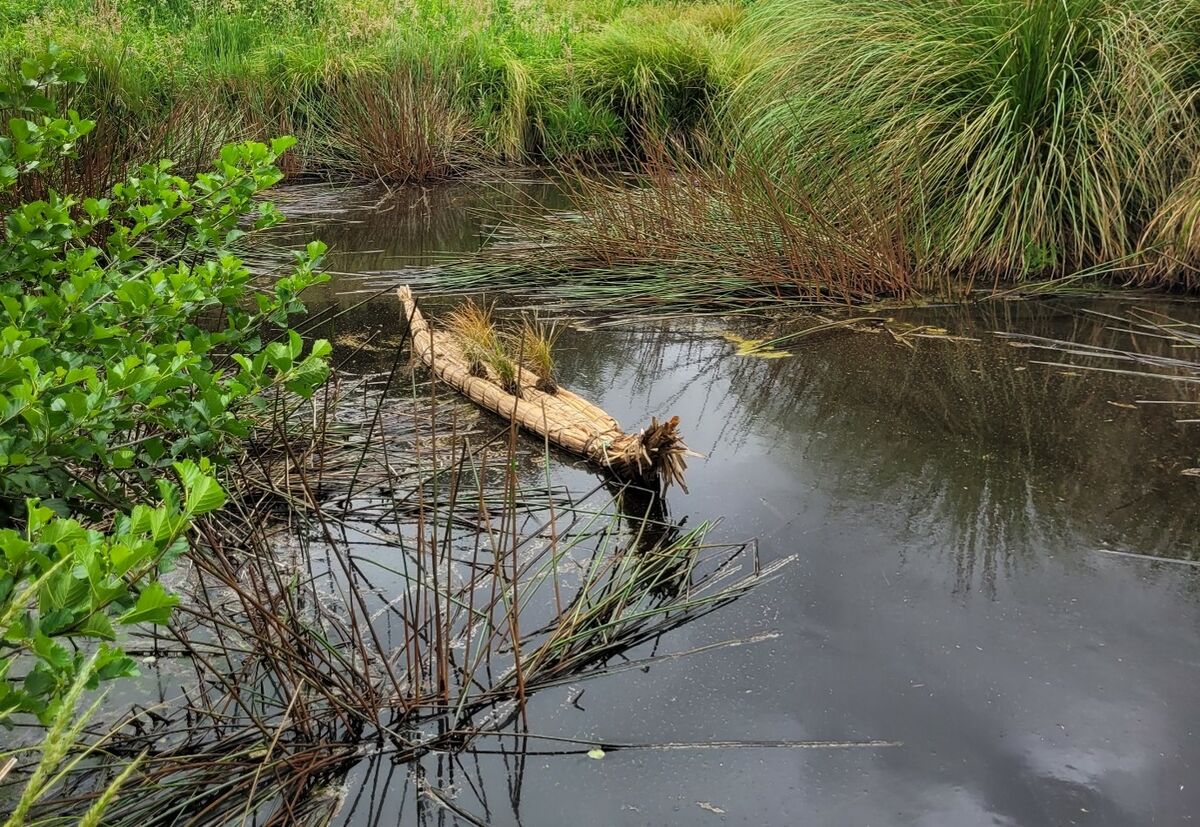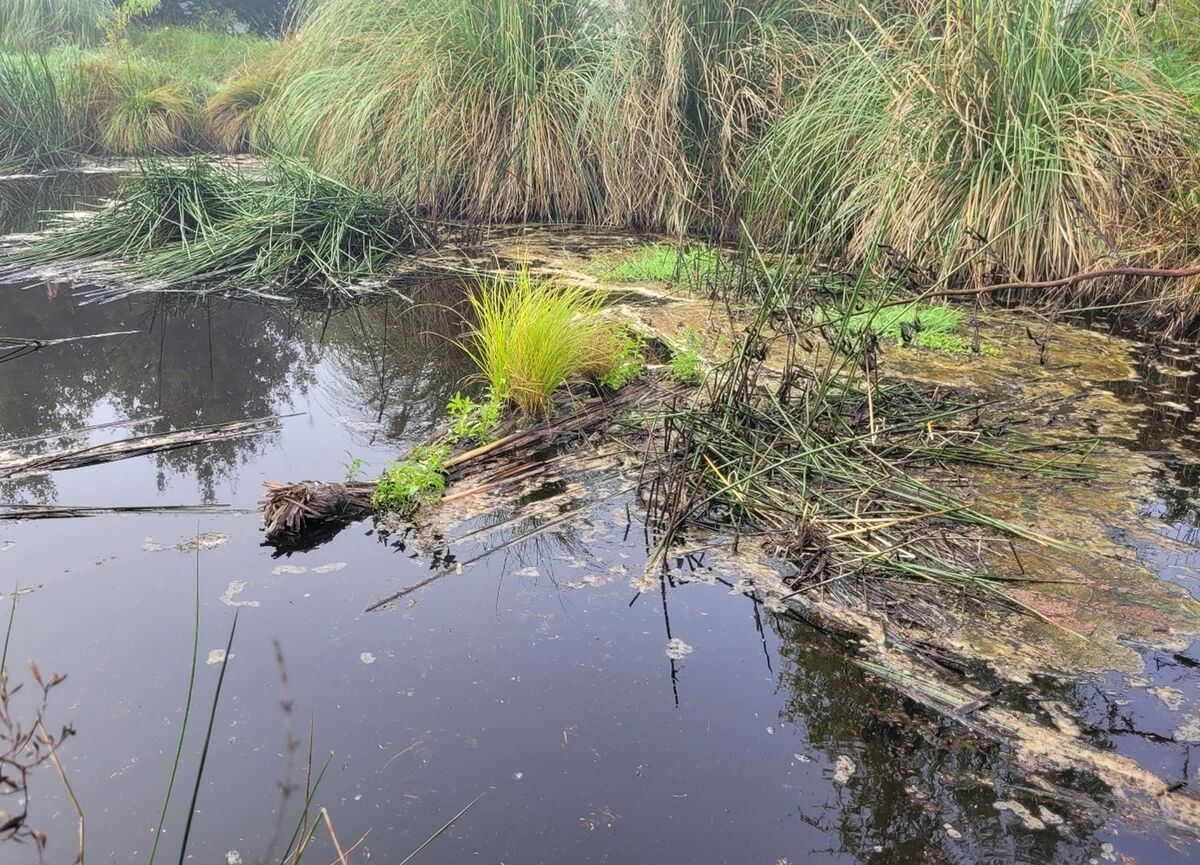
Mokihi - organic floating wetland trial
Living Water, the ten-year partnership between the Department of Conservation and Fonterra, has been working alongside representatives of Mana Whenua Ngāti Apakura at Lake Ruatuna, a peat lake in the Waipā District of the Waikato. Early on, Living Water engaged the services of Mahuru Wilcox of Manaaki Whenua (Landcare Research) to lead the engagement with Ngāti Apakura and help weave Mātauranga Māori into the work.
In recent years, the Ngāti Apakura representative has been Rama Kete who has been instrumental in the establishment of the Pā Harakeke (Significant flax varieties translocated to Lake Ruatuna • Living Water) and Rongoā species plantings. Rama has worked closely with the Living Water DOC team, including Living Water Site Lead, Rose Graham, as they have navigated water quality challenges at the lake. This has involved exploring mitigation options, including the use of floating wetlands.
Floating wetlands are structures/rafts that enable wetland plants, like Carex species, to grow over open water in ponds, lakes and drains. The plant root system grows out into the water and the subsequent large surface area (where microbes and bacteria live) traps sediment and nutrients, removing them from the water. Ultimately this can improve the quality of the water. Typically, floating wetland structures are made from plastic.
Read more about Living Water’s floating wetlands here: Floating Wetlands • Living Water
Rama was intrigued by the floating wetland concept but wondered if it couldn’t be made from natural materials that would support the plants. “Most floating wetlands are made from plastic or some kind of inorganic material, Rama was really keen to find an organic material structure that could support the plants” says Rose.
Along with Pita Te Ngaru and Janaya Waitere, she harvested raupō (bulrush) leaves and harakeke (NZ Flax) flower stalks and they began to experiment. The concept was based off mokihi (canoe), a traditional, lightweight, buoyant raft made of flax or raupō, historically used to help travel over lakes and rivers. The resulting creation was a beautiful mokihi like structure. The lightweight and buoyant harakeke flower stalks were encased in the raupō leaves and all bound with twine.

Rose Graham

Rose and Rama explored options for how and where best to trial the mokihi. The sediment ponds at Lake Ruatuna were decided as they provided easy access for monitoring and maintenance. “The mokihi was very dry, we wondered if it might become water-logged quickly and sink. Another question was its stability – would it tip onto its side?” Says Rose.
Some Carex were purchased and gaps were gently pried open amongst the leaves and flower stalks to hold both the soil and young plants. In mid-October 2022, the mokihi was launched. “The first question was answered immediately – it was very stable! It was also very buoyant, we wondered if the plant roots would be too far away from the water to keep the plants alive.” Says Rose.
Over the next few weeks and months, the state of the mokihi was regularly checked. The plants were watered a couple of times, but fortunately the wet summer meant keeping the plants moist was easy! The second question was soon answered – it did not sink! “The mokihi far exceeded the expectations and at the time of writing this story in June 2023, it was still floating and supporting big, healthy Carex” says Rose.
As expected, a gradual breakdown of the structure has been apparent, but reassuringly it is all natural materials – echoing the harakeke and raupō that grow naturally all around it. Due to the depth of the pond and rate of breakdown, we made the decision in late March 2023 to anchor the structure along the shallower edge, where the root systems will be able to find solid ground. This will help ensure the survival of the Carex, which can continue to shade the water, provide habitat and remove nutrients.
Now that the initial trial has been undertaken, Rama and Rose are already thinking exciting possibilities to consider. How could the structure be made bigger? How can we best to create cavities to hold the Carex in place? How best to increase overall capacity to hold plants? What would have happened if we had put the mokihi in straight after construction, when the materials weren’t as dry? Would it float for a longer or shorter duration? Could they support other, taller wetland plants? Could we trial one made from harakeke leaves instead?
If you have trialled floating wetlands made of natural materials and would like to share your learnings, Living Water and Rama would love to hear from you!
Please contact [email protected].
